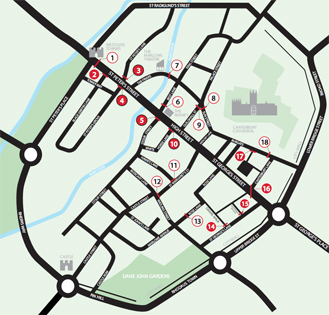In Canterbury, the city council’s city centre security bollards scheme will see 105 bollards installed at 18 locations. The first site to see work is at Iron Bar Lane; next on the schedule will be St Peter’s Street, St Peter’s Grove and Black Griffin Lane.
Across the 18 sites there will be a mix of automated, manually-retractable and static bollards. The £789,000 project is a precaution on the advice of counter-terrorism police to stop a hostile vehicle being driven at pedestrians. The authorities stress that there is no specific intelligence pinpointing Canterbury, one of the UK’s main magnets for tourists, as being at risk.
The automated bollards will be connected to the council’s CCTV control room via a camera and intercom and are due to apply in the autumn. Access will only be granted to vehicles specified in the traffic regulation order. Emergency vehicles and cash in transit vans will be allowed access 24-hours. Between 10.30am and 4pm, a tradesperson or delivery driver will not be given access to the pedestrian zone. All City Centre Access Permit holders must apply for a new permit by visiting canterbury.gov.uk/citycentreaccess. Residents are eligible for a permit if their only access to private parking at their property is via the pedestrian zone.
The council will write to nearby residents and businesses in advance of work starting at each site. Similar work has gone on in recent years other tourist and historic centres such as York and Winchester, and in cities, besides anti-ram barriers to protect pedestrians on bridges over the Thames in central London and over the Trent in Nottingham, where crowds go to and from Nottinghamshire cricket, and Nottingham Forest FC.










